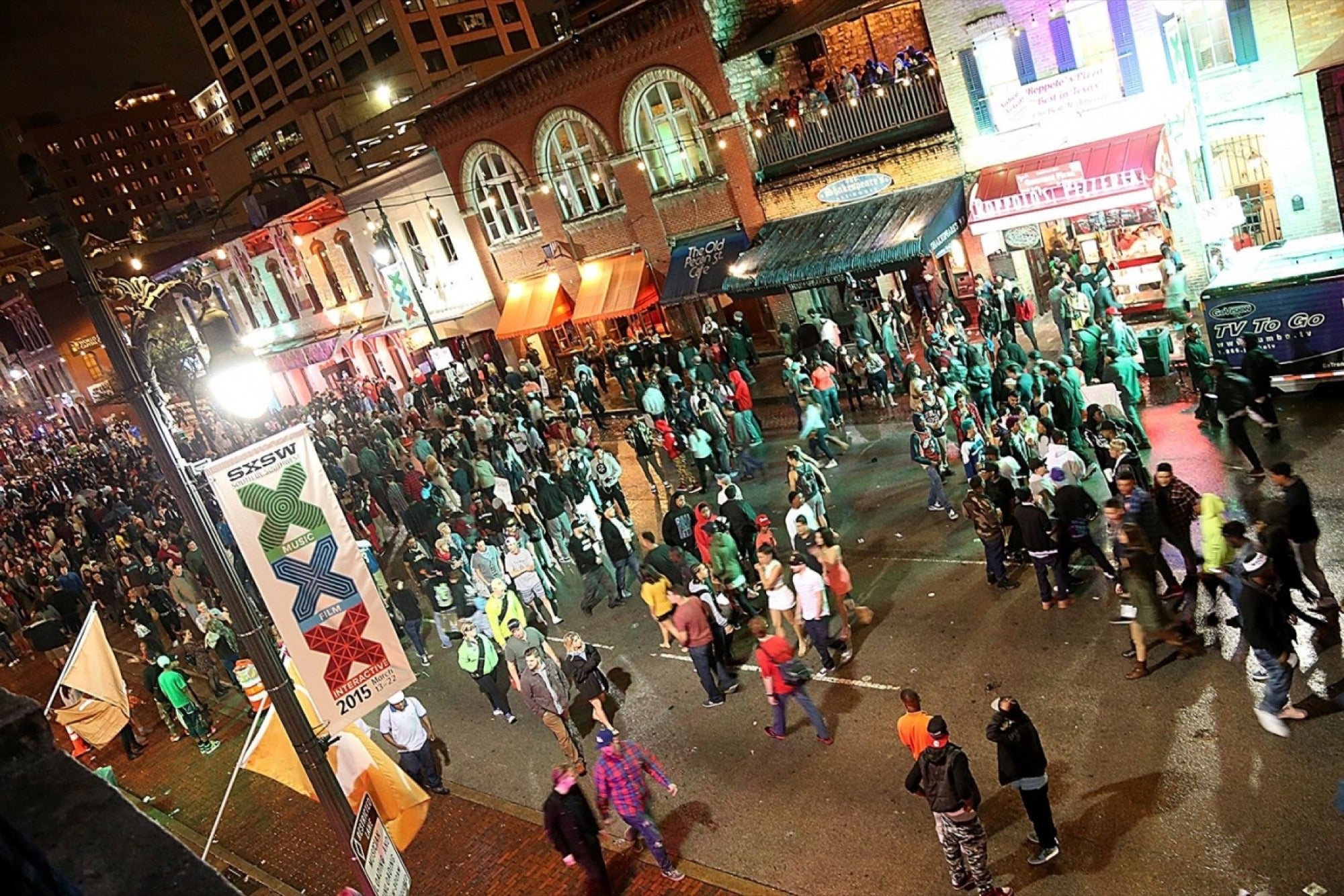SXSW Lessons From the Founders of Facebook, Twitter, Foursquare and More Be remembered for the right reasons.
By Linda Lacina

BIZ Experiences is on the ground at SXSW. Watch our coverage for highlights throughout the festival.
When we think of SXSW, we think of fun launches and campy events. We don't always think about major flubs or how startups maximized the festival for true momentum.
Take a look at these standout moments from past festivals -- and what they can teach you about making the most of your presence.
Related: SXSW 2017: What's Weird, Fun, Crazy and Amazing This Year
Read the room -- and work with the crowd.
Appearing for a keynote or session? Think carefully about what the audience expects, and be ready to pivot.
This was a lesson learned the hard way at Mark Zuckerberg's first keynote in 2008, when he became the surprising star of the event -- and not for good reasons.
The then 23-year-old Facebook founder was a much anticipated keynote to be interviewed by journalist Sarah Lacy. She'd planned a conversational chat with Zuck, since he was notoriously tight-lipped. Unfortunately, he seemed uncomfortable on the stage, and when the conversation didn't move past small talk, the audience rebelled, yelling out commands such as "Talk about something interesting" to the applause of the crowd.
After battling with the audience, Lacy eventually turned from interviewer to moderator between the founder and the audience.
Be where the traffic is.
Twitter didn't launch at SXSW's 2007 festival (though it's often included in lists of startups that did). However, it did use the event to build momentum. How? According to a post by co-founder Evan Williams on Quora, the company spent $11,000 for a visualization of the service on flat-panel screens in the hallways, knowing that was where the action was. A special feature allowed attendees to text to join, and then automatically sign them up so they could follow ambassadors throughout the festival. This was the only money the service spent on marketing.
Have a point person back home.
Dennis Crowley launched Foursquare at SXSW in 2009. Crowley's team hustled to get the service ready for the festival in less than three months. Still, the event can be manic and he suggests anyone launching something at the festival to have someone someone away from SXSW's distractions to watch over things, like the servers, the load and the community. This can keep one person focused on the backend, while your team on the ground rustles up attention.
Launching as SXSW? You might launch with a rival.
Foursquare debuted at SXSW in 2009, the same day another location-based social network, GoWalla. This was a surprise to both companies, as neither really knew about the other. With GoWalla a bit buggy at its start, FourSquare pulled ahead to became the "breakout app" of that year's festival. The dual launches sparked a rivalry that was played up in the press -- one that could be distracting. As GoWalla's founder Josh Williams later said, "Both companies could have afforded to focus on it a little bit less." GoWalla would later be acquired by Facebook and was shut down in March 2012.
Know it’s not about you.
Jesse Brown unveiled Bitstrips, the company behind personalized emoji creator Bitmoji, at the 2008 event. The company used the conference to create customizable cartoons to riff on the conference. It had fun with a Mark Zuckerberg interview that had gone wrong and caricatured top bloggers at the time. The strategy got attention -- and was soon getting media buzz from Wired, Mashable and more. (It also later got acquired by Snapchat for a reported $100 million)
Find the right people.
Tim Ferriss chose to do a keynote at the 2008 SXSW specifically to reach early adopters in tech, as he explained in his latest book Tools of Titans. While this talk was made in a 100-person capacity room, he's said that it was pivotal to jumpstarting his career. What's important, Ferriss says, isn't the number of people, but reaching the right people. Ferriss says he's used this method for each book since, seeking out technologies that are emerging while gaining followers and momentum.
Buzz isn’t enough.
Meerkat, a livestreaming app, was the darling of SXSW 2015 -- one of the first true breakout sensations in years. The festival brought it buzz and a user base, but the success was fleeting. Later that month, Twitter launched its own livestreaming app, Periscope. By the summer, Facebook debuted Facebook Live. By August the company was already planning a pivot -- one that didn't include live streaming. So while Meerkat got a great launch, it didn't have the resources or distribution to compete with more established players, a sobering reminder for startups launching minimum-viable prototypes into market at SXSW or any other time.
 Gary Miller | FilmMagic | Getty Images
Gary Miller | FilmMagic | Getty Images Brad Barket | Getty Images
Brad Barket | Getty Images Amy E. Price | Getty Images
Amy E. Price | Getty Images GoWalla
GoWalla Bitstrips
Bitstrips Travis P Ball | Getty Images
Travis P Ball | Getty Images Meerkat
Meerkat











